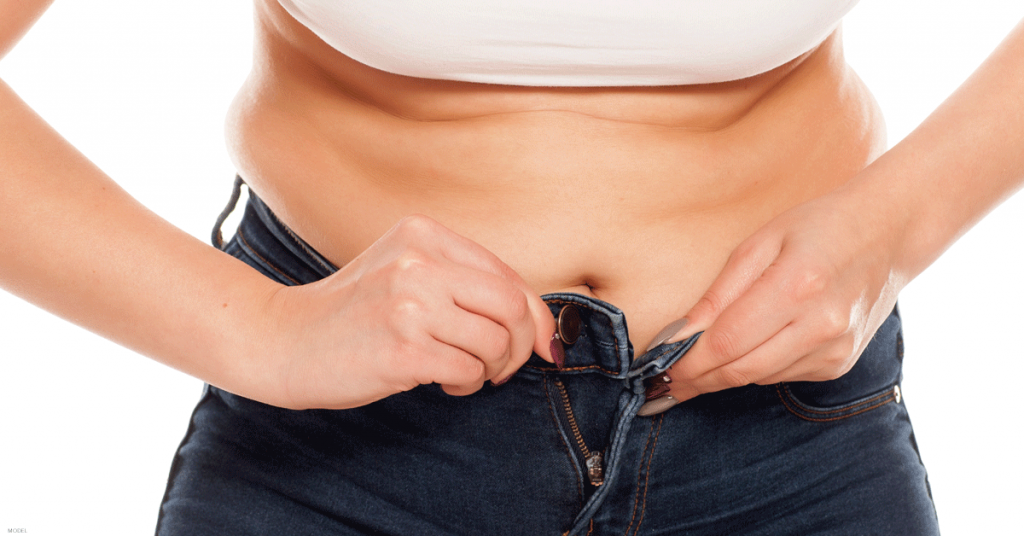“Fat” has become a bit of a dirty word, and one I hear often in my plastic surgery practice in Chicago. But fat comes in many forms, and there are various ways to reduce it—some of which are more effective than others. Before deciding on the right fat reduction option for you, it’s important to understand the differences.
“Fluffy Fat”
This soft, jiggly fat is far more frequently a complaint among women. Also called subcutaneous fat, it accumulates between the skin and muscle, making it easy to see. Common areas of accumulation include the stomach, hips, thighs, and backs of the arms. Most female bodies create hormones that tell the body to hold onto this fat. This type of fat has an evolutionary purpose. By stubbornly collecting on the body, it could sustain pregnant women in times of food scarcity, ensuring their pregnancies would be brought to term and the species would continue to propagate. But today, when food is easily accessible in the developed world, this fat is simply a nuisance.
Liposuction is often my preferred option for reducing this type of fat. The technique I use in my practice is a more refined form of liposuction called liposculpture, and it requires the artistic touch its name implies. I use an extremely small cannula that doesn’t leave behind any significant visible scarring. I also like using ultrasound-assisted liposuction, or UAL, which uses ultrasound energy to gently break fat apart before extracting it, causing less trauma to the surrounding tissues and resulting in a more expedient recuperation.
Fibrous Fat
Also occurring subcutaneously, fibrous fat is slightly tougher than fluffy fat. Fibrous fat often begins as fluffy fat, but becomes fibrous over time, especially as a result of patient wearing tight clothing. The toughness of fibrous fat can make it more challenging to remove. However, because of where it is usually found on the body, I still prefer to use liposuction. My advanced techniques meticulously guide the cannula through the unwanted fat, loosening it before removal. Once the fat is extracted, I carefully sculpt the remaining fat to ensure a smooth result that’s free of contour irregularities or dimpling.
Cellulite
These troublesome dimples can be associated with fat, but they actually have little to do with weight. Cellulite occurs when fat cells become trapped within skin’s lower layers. Women are far more prone to developing cellulite, and being at a healthy weight does not grant immunity. Although it is generally accepted that losing weight doesn’t typically reduce cellulite, there are gaps in the medical understanding of what causes it.
Of the promising minimally invasive options for treating cellulite, I’ve found the most consistently pleasing results come from surgical excision and redraping of skin. This is usually achieved by a butt or thigh lift procedure. Although these surgeries produce very natural-looking results, the best plastic surgeons in Chicago agree that the risks and benefits must be carefully weighed. Cellulite in the lower thighs is also less likely to be treated using these techniques.
Visceral Fat
Also known as “firm fat,” visceral fat accumulates beneath the muscles. It’s especially insidious because it tends to develop around the internal organs, surrounding them and potentially causing health problems. Because of its position, visceral fat is not easily visible. In fact, people who don’t appear significantly overweight may have concealed visceral fat. It tends to accumulate even without a substantial change in weight, which is why the middle often thickens with age.
Unfortunately, visceral fat cannot be reduced with surgical methods. Attempting to remove visceral fat via liposuction can lead to serious complications. Instead, the best way to reduce visceral fat is with lifestyle changes. This type of fat is typically quite responsive to calorie reduction and improved exercise habits, representing a significant percentage of the overall weight loss achieved.
It should be noted that even healthy eating and exercise will not completely eliminate the addition of visceral fat and natural changes that take place over time. Overly-aggressive attention to weight maintenance can result in a loss of facial fat, which already occurs with aging.
I enjoy meeting with patients in person to explore the most appropriate options—surgical or nonsurgical—for them. If you’re interested in familiarizing yourself with your own options, please contact my practice to request your consultation.



Leave a Reply